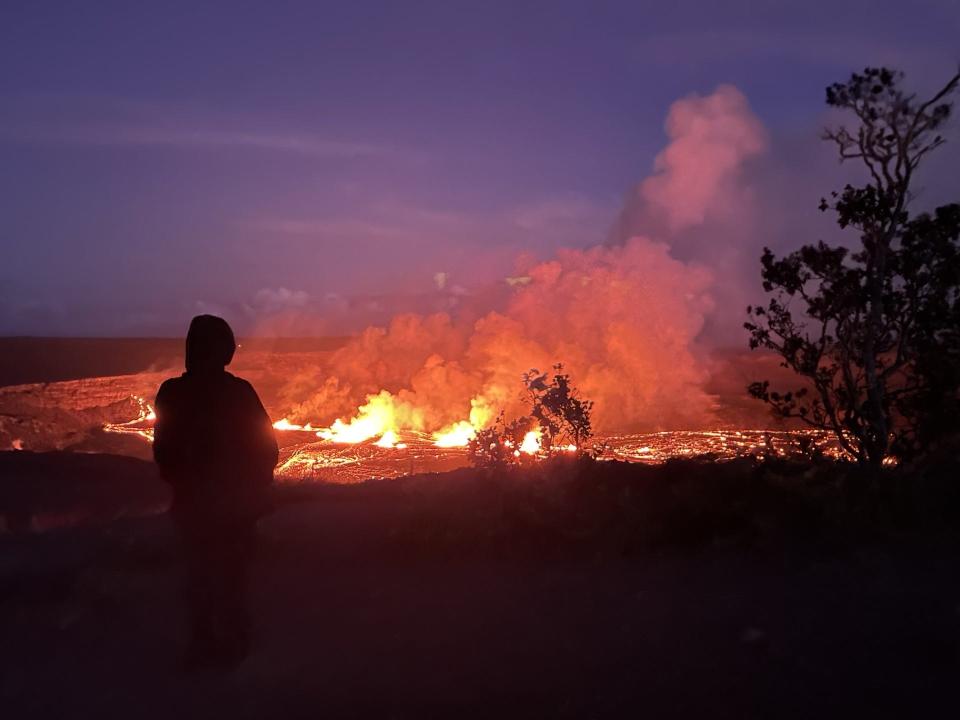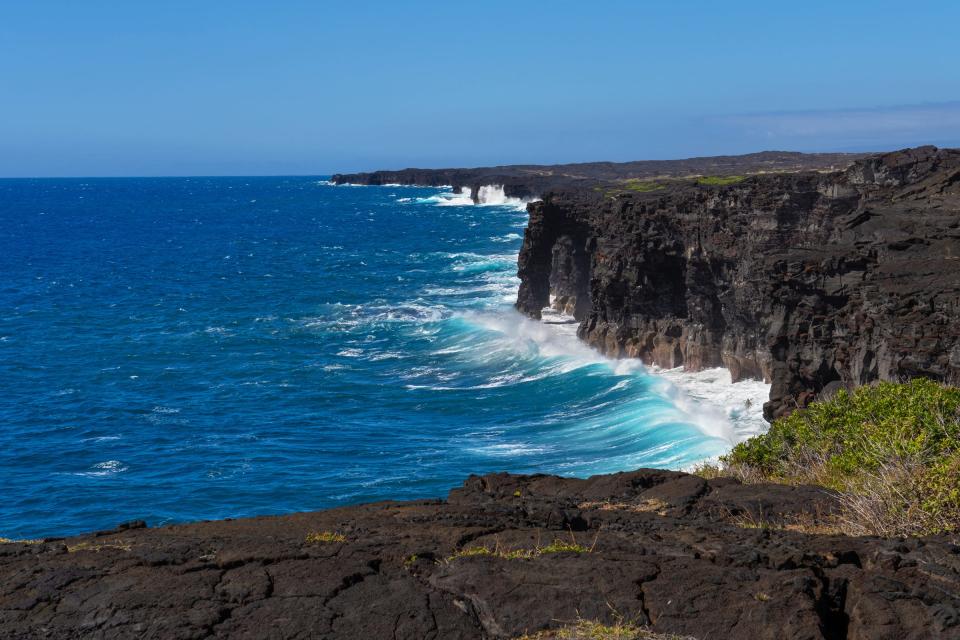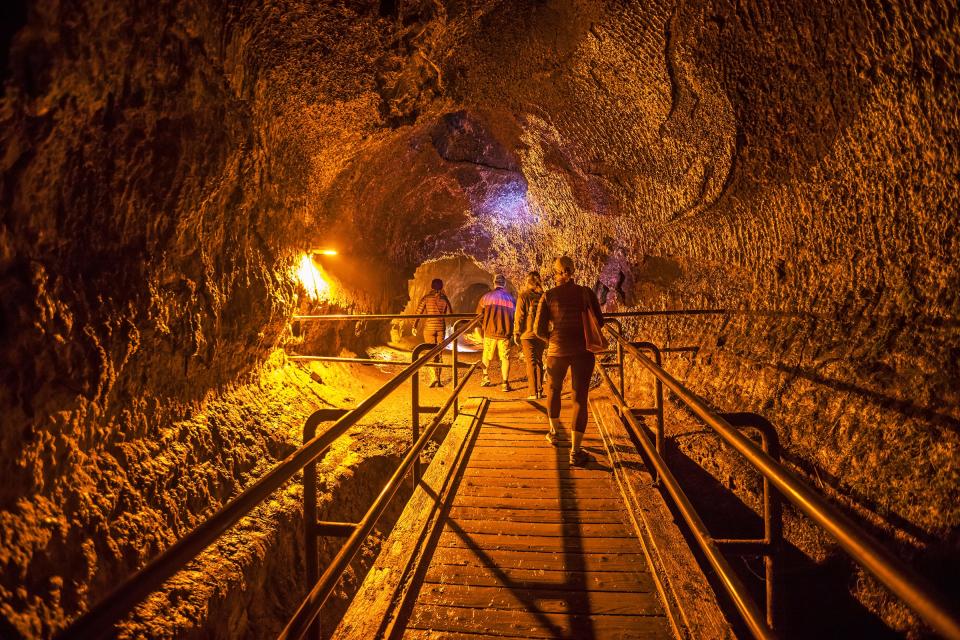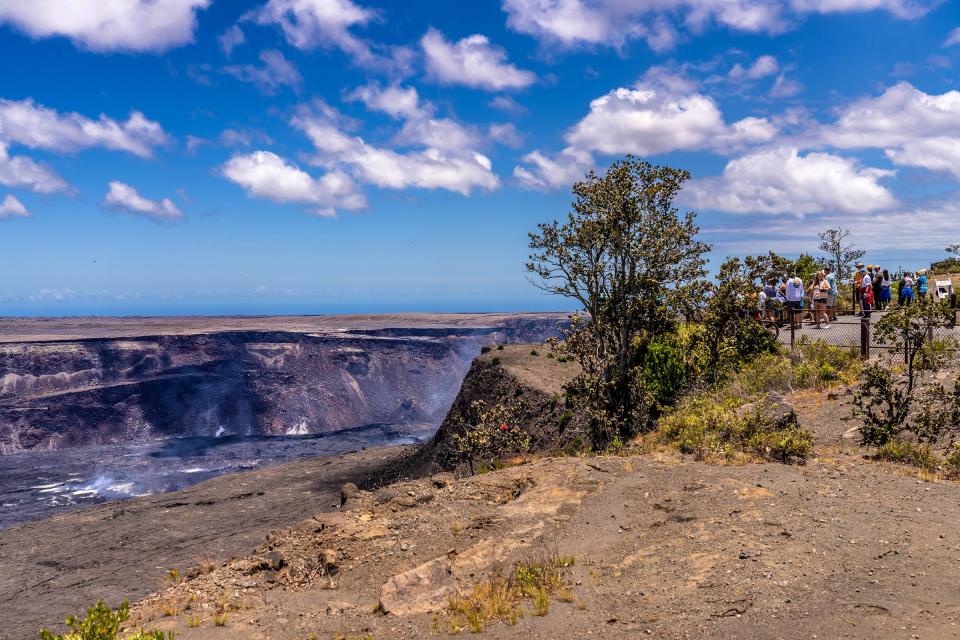Raw Hawaii: Why you need a whole day at Hawaii Volcanoes National Park
“In Hawaii, we have a tendency to run toward an eruption as opposed to running away from them,” said Jessica Ferracane, public affairs specialist for Hawaii Volcanoes National Park.
The park’s famous volcanoes draw more than a million visitors each year, making it one of America’s more popular national parks.
But even when Kilauea and Mauna Loa aren’t erupting, there’s evidence of their activity.
“The volcanoes change the landscape here constantly,” Ferracane said. “They're either covering up the landscape with lava flows, cleaving through a forest burning things or they’re creating new land.”
Here’s what travelers should know about Hawaii Volcanoes, the latest national park in USA TODAY’s yearlong series going from Acadia to Zion.
Where are the Hawaiian volcanoes located?
There are 15 volcanoes across Hawaii’s eight main islands, according to the U.S. Geological Survey.
Kilauea and Mauna Loa are located in Hawaii Volcanoes National Park on the Big Island of Hawaii.
The park is about 30 miles away from Hilo and the nearest airport, Hilo International Airport. Ellison Onizuka Kona International Airport at Keahole is about 90 miles away from the park.

What is the cultural significance of Hawaii Volcanoes National Park?
“Almost everywhere in this park is sacred to Native Hawaiians,” Ferracane said. “Long before the Park Service came, they have been coming to this landscape to collect, to forage, to pay homage to the gods and to the deities, and they still do today.”
She explained that according to tradition, Pele, the Hawaiian goddess of fire and volcanoes and creator and destroyer of land, lives in Halemʻumaʻu Crater at the summit of Kilauea. Lava is considered her body and volcanic steam and gas are considered her breath.
“So Pele is everywhere,” Ferracane said. “Some of the high elevation forests up on Mauna Loa are also considered wahi pana, legendary places, sacred places.”
What can people do at Hawaii Volcanoes National Park?
“The whole front country summit area, where the visitor center is, people definitely need to do that,” Ferracane said. “Walking through the Lava Tube is probably the second-most popular place in the park.”
She said the best way to explore and connect with the land is on foot, but visitors should also drive along Chain of Craters Road.
“That leads from the summit of Kilauea all the way down to the coast, where those cliffs meet the crashing ocean waves,” Ferracane said. “Driving down Chain of Craters Road to the ocean is stunning, not just visually but because that road showcases many decades of volcanic activity.”
She noted lava has covered the road five times since 1969. “The park keeps rebuilding that road to go through those historic flows.”
Listen up, tourists: Hawaii locals share what they wish visitors would stop doing
How much time do you need in Hawaii Volcanoes National Park?
Ferracane recommends spending at least six hours in the park, but ideally one or two days.
“The park is so big. Hawaii Volcanoes National Park is more than 355,000 acres in size,” she said “And the park runs from sea level at the Pacific Ocean – where these lava rock cliffs dramatically drop into the ocean – all the way to the almost 14,000-foot summit of Mauna Loa, and there's no way you can visit that in an hour or two and really get the breadth of the park. There's seven different ecological zones.”

Can you see lava at Hawaii Volcanoes National Park?
Both types of Hawaii’s lava, pāhoehoe and ʻaʻā, can be seen along Chain of Craters Road, but visitors hoping to see molten lava will need to visit during an eruption.
“Mauna Loa erupted last year for 12 magnificent days, but that was the first time it had erupted since 1984,” Ferracane said.
Kīiauea erupts more often, most recently in September, but she said it used to erupt even more frequently.
“Things changed radically in 2018 when the East Rift Zone vent, called Puʻu ʻŌʻō, collapsed. It robbed all of the magma that was up here at the summit of Kilauea and the summit collapsed, and we had thousands and thousands of earthquakes, and it really changed the volcanic behavior and the volcanic activity since then,” she explained. “But since 2020, Kilauea has been doing these episodic periods of just spectacular summit eruption in the form of a lava lake. And each one I keep saying is ‘Oh, that is the most beautiful eruption I ever saw.’ ”
Can you drive around Hawaii Volcanoes National Park?
“Once upon a time, before Kilauea does what she does and changes the park dramatically, you could drive through Hawaii Volcanoes at the bottom of Chain of Craters Road and take it all the way to Kalapana and then go up the highway, outside of the park,” Ferracane said.
However a few years back, after lava flows repeatedly covered the road, she said the park decided to no longer maintain the lower stretch as a regular thoroughfare. It can still be used as an evacuation route in case of emergencies, but visitors can not drive through.
“When you go down Chain of Craters Road you have to turn around and come back up,” she said.
How much does it cost to get into Hawaii Volcanoes National Park?
Park entry costs $30 for a private car, $25 for a motorcycle and $15 for pedestrians or cyclists.
Visitors should note that the Hawaii Volcanoes has gone cashless, so payment must be made with debit or credit cards in person or online at Recreation.gov.

What do I need to know before going to Hawaii Volcanoes National Park?
“Always check (national) park websites, but especially for here because we have two active volcanoes,” Ferracane said. “There could be very serious hazards presented by an active eruption, and we are very good about keeping our website updated.”
Eruptions draw lots of crowds.
“If it's really busy and they can't get into the entrance or to an area where they want to go and see the eruption because there are 200 cars waiting for a parking spot, they can try to come back at 2 a.m. or some other untraditional time,” Ferracane said, reminding visitors that the Kilauea summit area of the park is open around the clock.
Those willing to wait up late during eruptions or visit extra early are in for a treat.
“It's unbelievable. It's like the difference (between) watching a campfire or anything in the daytime versus nighttime. It’s still neat to see,” she said. “But at night, you don’t want to leave. It’s just like wow. And then if it’s quiet too, you’re not listening to visitors talk all around you. You can hear the sounds, the gasses, the exploding rocks as the lava’s coming up through the summit crater. It's pretty special.”

This article originally appeared on USA TODAY: Hawaii Volcanoes National Park isn’t just striking. It’s sacred.

